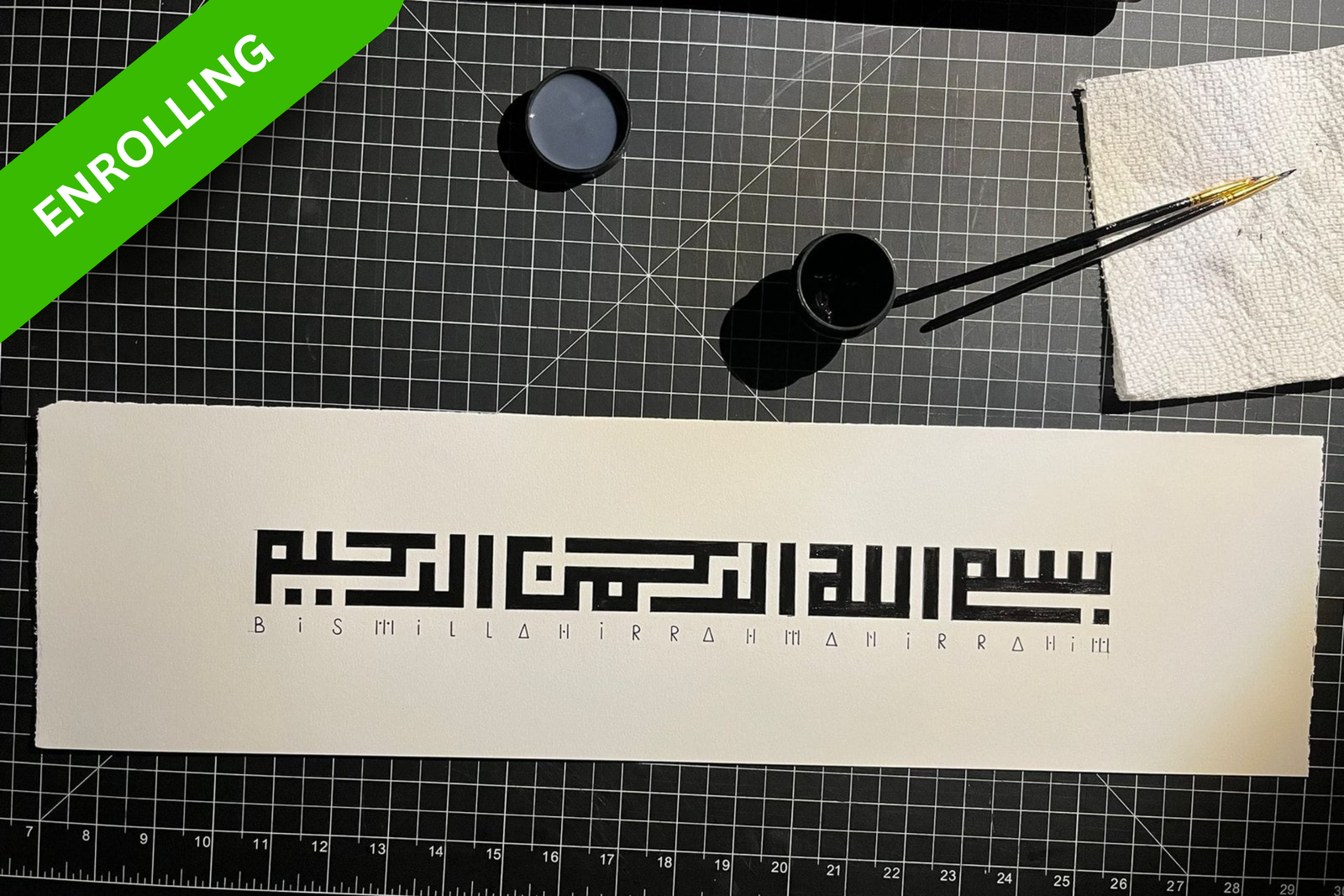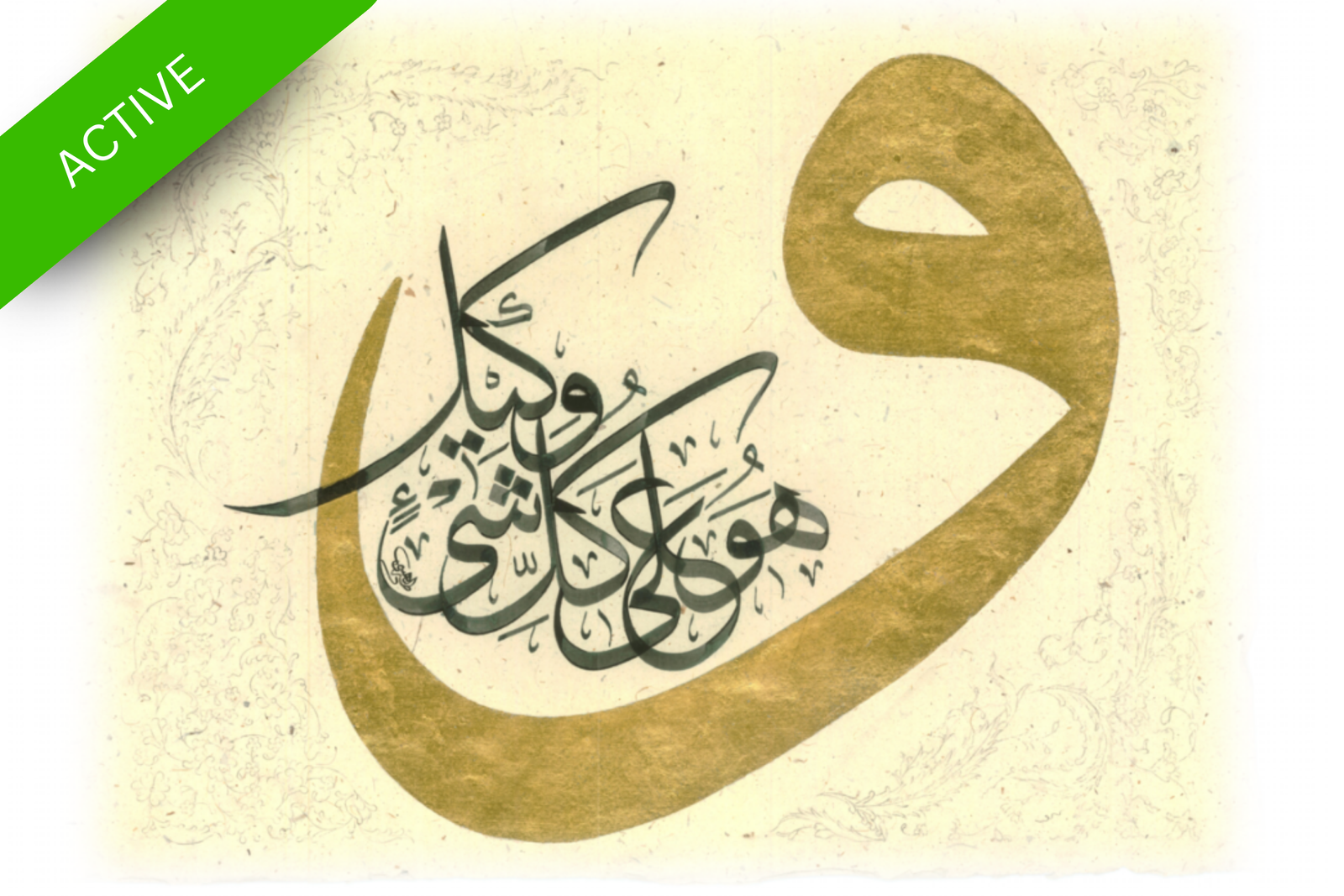LEARN
Islamic Geometric Art
Instructed by Ali Karatay
- 12 Weeks
- 2+ Hrs Live Classes/Week
- Beginner Level
- Language: Turkish
Fill out our INTEREST FORM for English classes.
$225
$191
one-time payment
or three installments of $75/mo
- 30-day money back guaratee
- Live session recordings access
- Mobile and computer access
- Certificate of completion
Overview
This course is designed for hands-on learners—no complex calculations or advanced geometry skills required! With just a ruler (or a straight edge), a pencil, and a marker, you’ll create stunning Islamic geometric patterns.
Through step-by-step guided exercises, you’ll learn how to construct patterns just as Islamic artisans have done for centuries. Each lesson focuses on building patterns from foundational shapes, making it easy to follow and master effective techniques.
Key Points
- Construct intricate geometric patterns using circles, lines, and grids.
- Seamlessly apply tessellation techniques to create flawless repeating designs.
- Enhance and refine basic patterns into artistic compositions.
- Explore traditional techniques from different regions of the Islamic world.
- Experiment with various styles and compositions to develop your own unique approach.
Gallery of Student Works
Instructor

Dr. Ali Karatay
Artist, certified calligrapher, and art educator; ~20 years in design/advertising; former Head of Animation at Dokuz Eylül University; Visiting Professor at UC Davis (art–tech & art therapy). He has taught 200+ online students and leads the International Erguvan Art & Academy team.
Weekly Schedule
Topic:
- Origins of Islamic geometric art and the role of sacred geometry
- How to use a compass, ruler, and protractor
- Overview of digital tools (Procreate, Illustrator)
Practical Activity:
- Drawing perfect circles and straight lines
- Understanding symmetry and proportions
Topics:
- Significance of hexagonal structures in Islamic art
- How to construct a 6-pointed star pattern
- Techniques for tessellating hexagonal designs
Practical Activity:
- Step-by-step creation of a 6-pointed star pattern
- Applying tessellation techniques
Topics:
- Historical and architectural use of octagonal designs
- The 8-pointed star in Ottoman and Seljuk architecture
- Composition rules and detailing techniques
Practical Activity:
- Drawing an 8-pointed star pattern
- Exploring color and shading techniques
Topics:
- The role of 12-fold symmetry in Andalusian and Persian art
- Advanced circle division techniques
- Constructing geometric grids
Practical Activity:
- Creating a 12-pointed star pattern
- Experimenting with interwoven designs
Topics:
- Analysis of 16-pointed star motifs
- Large-scale applications in tilework and stone carvings
- Studies in symmetry and proportion
Practical Activity:
- Step-by-step drawing of a 16-pointed star
- Exploring different composition techniques
Topics:
- Mathematical structure of Girih knotwork patterns
- Persian Girih motifs and their historical significance
- Creating seamless interlocking designs
Practical Activity:
- Drawing Girih patterns manually or digitally
- Experimenting with interwoven designs
Topics:
- What is Muqarnas, and how is it structured?
- Three-dimensional surface decoration
- Shading techniques for depth and realism
Practical Activity:
- Constructing a basic Muqarnas pattern
- Digital Muqarnas design exploration
Topics:
- The fusion of Kufic calligraphy and geometry
- Kufic script in geometric pattern formation
- Minimalist Islamic art techniques
Practical Activity:
- Creating Kufic-inspired patterns
- Exploring both digital and hand-drawn variations
Topics:
- Zellige patterns in Andalusian and Moroccan architecture
- Composition of multi-colored geometric designs
- Understanding color theory and harmony
Practical Activity:
- Constructing a Zellige pattern
- Applying colors and textures
Topics:
- The history of Ottoman ceramic tile patterns
- Geometric forms in traditional Iznik tilework
- Application techniques on ceramics
Practical Activity:
- Drawing an Ottoman tile pattern
- Coloring and embellishing designs
Topics:
- Creating an original pattern design
- Integrating symmetry, composition, and embellishment techniques
- Working with both digital and traditional mediums
Practical Activity:
- Designing and coloring your final artwork
Topics:
- Student project presentations and critiques
- Guidance for further studies in geometric art
- Certification process and portfolio development
Final Project Submission:
- Showcasing completed projects and receiving feedback
Supply List
- Pencils (HB, 2B, 4B) and eraser
- Eraser and kneaded eraser
- Ruler (30–50 cm)
- Compass
- Broad or chisel-tip markers
- Habitant sociosqu ornare tellus ridiculus quam
- Watercolor paper (minimum A3-sized, 200–300 gsm)
- Sketchbook (A4 or A3)
- Grid paper (A3 preferred)
- Tracing paper
- Gold paint
Ready for your own Kufi journey?
Related courses

Qufi Calligraphy
LEARN Instructed by Ali Karatay 12 Weeks 2+ Hrs Live Classes/Week Beginner Level Language: Turkish Fill out our INTEREST FORM for English classes. ENROLL NOW

Arabic Calligraphy – Thuluth (Sülüs)
Erguvan Academy’s Thuluth Certification Course is a specialized program designed to guide students into the depths of Thuluth calligraphy, mastering the art of traditional Islamic

Islamic Geometric Art
LEARN Instructed by Ali Karatay 12 Weeks 2+ Hrs Live Classes/Week Beginner Level Language: Turkish Fill out our INTEREST FORM for English classes. ENROLL NOW

